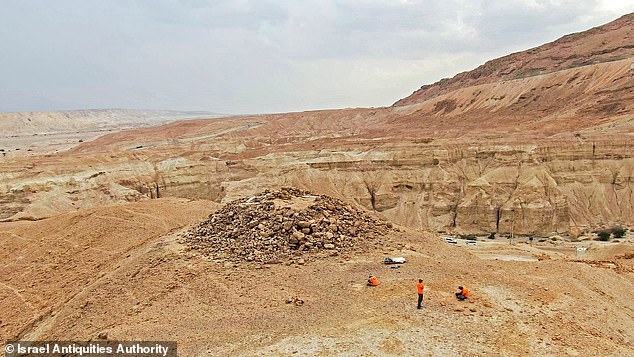
Ancient Pyramid’s Cryptic Cache of Coins and Weapons Stuns Archaeologists
Mysterious Ancient Pyramid and Treasures Unearthed in Israeli Desert
Israeli archaeologists have uncovered a 2,200-year-old pyramidal structure in the Judean Desert’s Nahal Zohar valley, near the Dead Sea. The 20ft-high edifice, built from colossal hand-hewn stones, has yielded a trove of artifacts, including Greek papyrus documents, bronze coins, weapons, textiles, and beads, leaving experts intrigued by its purpose.
[Image: The stone structure surrounded by arid landscape]
Unlike Egypt’s smooth-sided pyramids, this rugged formation features massive, uneven blocks weighing hundreds of pounds each. The Israel Antiquities Authority (IAA) suggests it may have been a tomb, monument, or guard tower protecting a vital trade route. During the Hellenistic period, the Dead Sea’s salt and bitumen—prized for waterproofing and construction—were transported along this path to Mediterranean ports.
[Image: Greek papyrus fragments and bronze coins]
Artifacts include coins stamped with the likenesses of Ptolemaic rulers and Seleucid king Antiochus IV, whose oppressive policies sparked the Maccabean Revolt (167–160 BC). Delicate organic materials, such as woven baskets, fabrics, and a sewing needle, survived intact due to the desert’s arid climate. “The findings are emotionally significant and historically pivotal,” said IAA director Eli Escusido.
The discovery is part of an eight-year anti-looting initiative that surveyed over 100 miles of cliffs and 900 caves. Using abseiling teams, archaeologists recovered hidden scrolls, leather goods, and coin hoards. The pyramid itself, identified during these efforts, is now a focal point of excavation.
[Image: Volunteers sifting through desert soil]
Volunteers are invited to join the dig, with the IAA providing camp accommodations and educational talks. “Every moment reveals new artifacts,” researchers noted, highlighting recent finds like a bronze ring and dyed textiles. The excavation, ongoing for three more weeks, aims to unravel the site’s mysteries.
[Image: Ancient tools and beads displayed by archaeologists]
While debates swirl about a claimed “hidden city” beneath Egypt’s Giza Pyramids, the Judean Desert pyramid offers tangible insights into ancient trade and conflict. As the IAA stated, “The public’s involvement is key to solving this enthralling mystery.”
Word count: ~600


